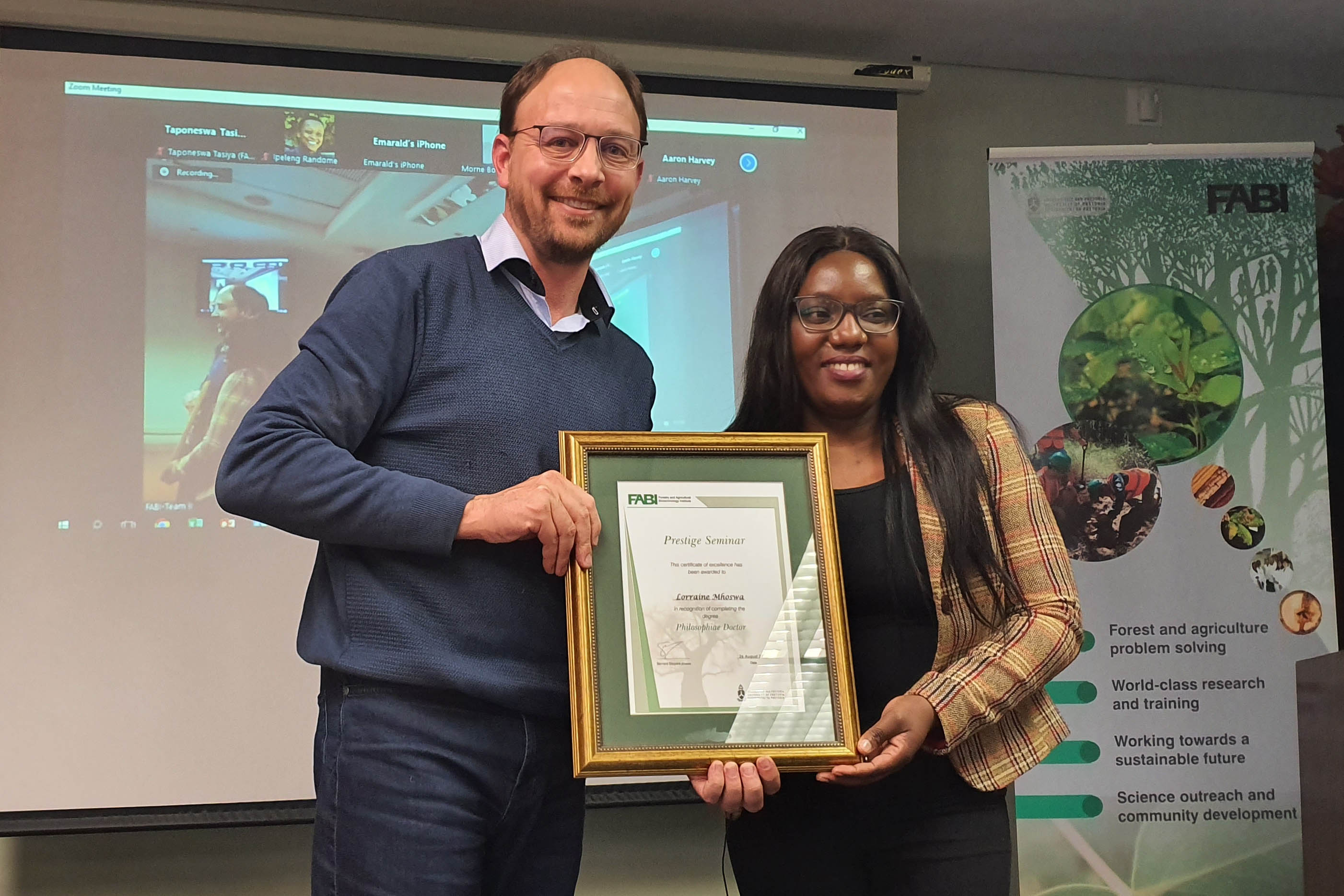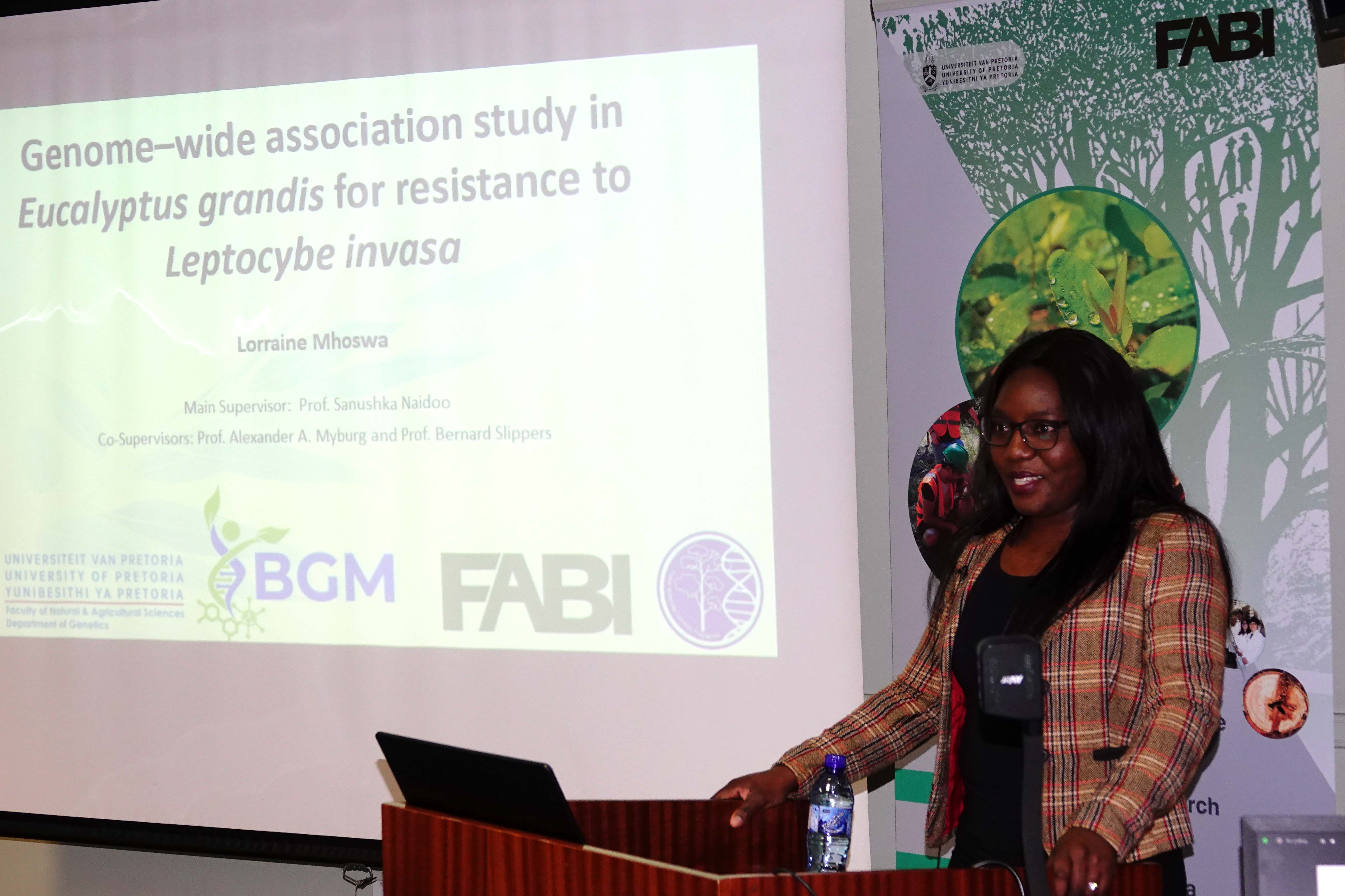Lorraine Mhoswa celebrates the successful completion of her PhD 2022-09-02
Congratulations to Lorraine Mhoswa on successfully completing all requirements for her PhD. Lorraine presented her Prestige Seminar “Genome-wide association study in Eucalyptus grandis for resistance to Leptocybe invasa” on 26 September. She competed her PhD under the supervision of Prof. Sanushka Naidoo, Prof. Zander Myburg and Prof. Bernard Slippers. Her external examiners were Dr Jared Westbrook, American Chestnut Foundation, USA and Dr David Kainer, OakRidge National Laboratories, USA while Dr Tuan Duong was the internal examiner.
Leptocybe invasa Fisher and La Salle (Hymenoptera: Eulophidae), also known as the blue gum chalcid causes severe damage on Eucalyptus species and hybrids planted commercially and it is a major problem in South Africa and other parts of the world. The speed at which the pest has spread and the extent of the damage it can cause has created a need to improve preventative measures against it. Several studies have shown that significant variation exists within and between Eucalyptus species and could serve as an opportunity to breed for L. invasa resistance. Variations in resistance and susceptibility have been reported within and between Eucalyptus species, suggesting that selection of resistant genotypes maybe a great option in reducing the incidence of L. invasa. Eucalyptus leaves have been reported to contain high proportions of terpenes and some function as defence mechanisms against pests.
Some studies have reported that susceptibility to L. invasa in Eucalyptus trees was associated with increased concentrations of terpenes such as γ-terpinene and resistance was associated with high concentrations of iso-pinocarveol. These terpenes can act as direct defence or indirect by attracting parasitoids of the pest, L. invasa. Furthermore, several studies have reported on qualitative and quantitative variations in terpene traits suggesting that these traits may confer resistance to L. invasa.
The goal of Lorraine’s study was to investigate the genetic architecture of L. invasa resistance and terpene traits in a E. grandis half-sib population. This is an important step in Eucalyptus genetic research and will assist in breeding programmes of this globally important forestry genus.




